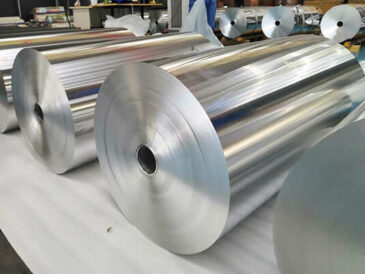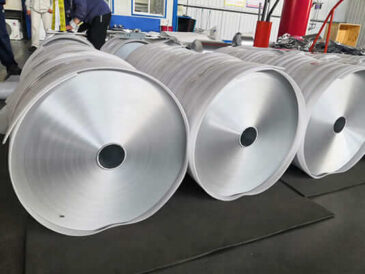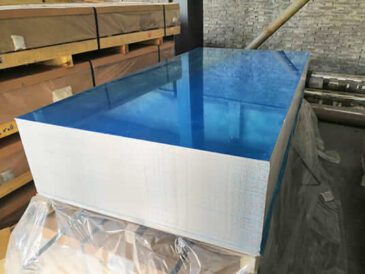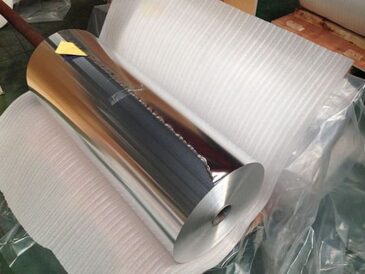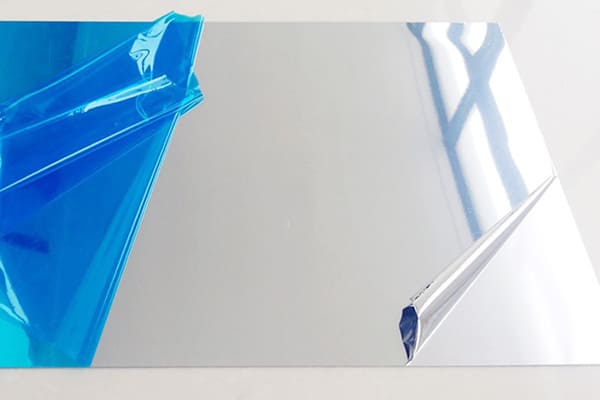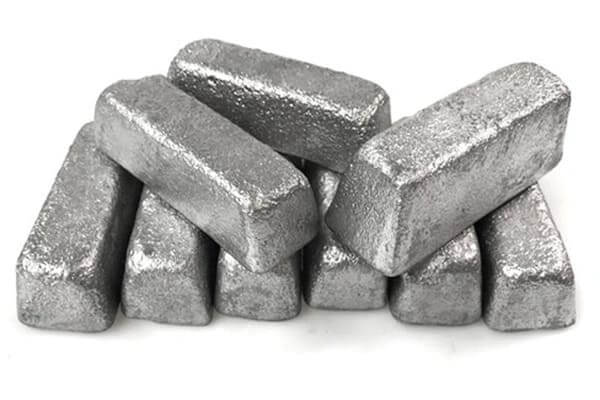Thin aluminum strip product
Aluminum strip is a commonly used metal material and a common product among aluminum alloys. Aluminum strips and aluminum coils have similar thickness specifications. The thickness of aluminum strips is generally less than 3mm, while the thickness of aluminum coils is greater than 0.2mm. The conventional thickness range of aluminum strips is 0.1-0.5mm, which belongs to thin aluminum strip.

thin aluminum strip
Thin aluminum strip alloy
| Alloy Series | Grade |
| 1000 series aluminum | 1050, 1060, 1070, 1100 |
| 3000 series aluminum | 3003, 3004 |
| 5000 series aluminum | 5005, 5052 |
| 8000 series aluminum | 8011, 8021 |
Aluminum strip thickness
Huawei is a professional thin aluminum strips manufacturer and supplier that can provide aluminum strips with a thickness of 0.15-3.0mm according to customer needs. Common nominal thicknesses are 0.2mm, 0.3mm, 0.4mm, 0.5mm, 0.6mm, and 0.8mm. , 1.0mm, 1.2mm, 1.5mm, 2.0mm, 2.5mm, etc.
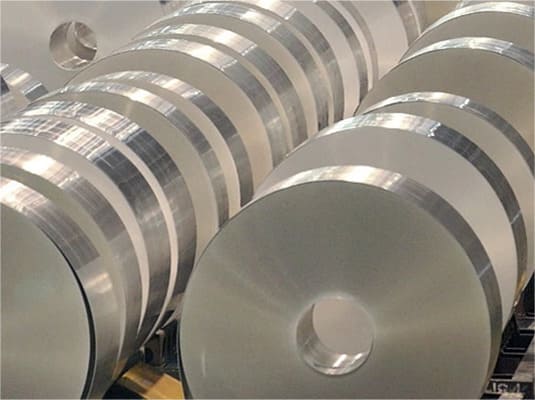
thin aluminum strips thickness
Thin aluminum strips product specification
| Product | Aluminum Strip |
| Standard | GB/T3190-2008, GB/T3880-2006, ASTB209, JIS H4000-2006, ISO9001,etc |
| Alloy | 1070 1100 3003 3004 5052 5754 6061 6063 8021 8079, etc |
| Thickness | 0.15-5.0 mm |
| Width | 10-600mm |
| Temper | F,O,H32,H34,H36,H38,H112,H321,T3,T351,T6,T651,etc. |
| Packing | Export standard, covering with brown paper and plastic film then packed with wooden case/pallet |
| Lead Time | Within 20-35 days |
| Productivity | 2000MT/Month |
| Payment Terms | T/T, irrevocable L/C at sight |
Thin aluminum strip thickness application
Aluminum strips of different thicknesses will also have different application requirements. The thicker the foil, the higher the application requirements. Common thicknesses and applications of thin aluminum strips are as follows.
Thin aluminum strips are used in the electronic field, usually requiring the use of very thin aluminum strips, such as 0.01mm, 0.015mm, 0.025mm and other thicknesses. These aluminum strips are usually used in capacitor foils, chips and other fields.
Thin aluminum strips are used in the construction field, usually requiring the use of thicker aluminum strips, such as 0.5mm, 0.8mm, 1mm and other thicknesses. These aluminum strips are usually used in aluminum alloy doors and windows, aluminum alloy curtain walls, aluminum alloy heat insulation panels and other fields. .
Aluminum alloy strip is used in the transportation field. It usually requires the use of medium-thickness aluminum strips, such as 0.15mm, 0.2mm, 0.3mm and other thicknesses. These aluminum strips are usually used for parts and shells of vehicles, trains and other vehicles.
In the field of packaging, thin aluminum strips are usually used, such as 0.02mm, 0.03mm, 0.04mm and other thicknesses. These aluminum strips are usually used in packaging fields such as food, medicine, and household products.
Mechanical properties of thin aluminum strips
| Internal Alloy | Former B.S. Specs | 0.2% Proof Stress MPa | Tensile Strength MPa | % Elongation | ||
| On | On | |||||
| √5.65 SO | 50 mm | |||||
| 1050A | 0 | S1B | 35 | 75 | 25 | 32 |
| H18 | 133 | 146 | – | 5 | ||
| 1080A | 0 | S1A | 30 | 75 | – | 32 |
| H18 | 125 | 138 | – | 5 | ||
| 1200 | 0 | S1C | 40 | 80 | 20 | 30 |
| H14 | 115 | 125 | – | 5 | ||
| H18 | 143 | 160 | – | 4 | ||
| 1350 | 0 | P1E | 95 | 85 | – | – |
| H12 | 110 | – | – | 60 | ||
| H14 | 125 | – | – | 70 | ||
| H16 | – | – | 75 | |||
| 3003 | 0 | 45 | 110 | 32 | ||
| H14 | 160 | 170 | 7.5 | |||
| H16 | 180 | 200 | 4.5 | |||
| H18 | 235 | 260 | 4 | |||
| 3103 | 0 | NS3 | 50 | 112 | – | 24 |
| H14 | 140 | 157 | – | 5 | ||
| H18 | 185 | 195 | – | 4 | ||
| 5005 | 0 | NS41 | – | 120 | – | 30 |
| H14 | 115 | 165 | – | 8 | ||
| H18 | 170 | 195 | – | 5 | ||
| 5052 | 0 | 90 | 200 | 22.5 | ||
| H22 | 180 | 240 | 18.5 | |||
| H24 | 220 | 260 | 9.5 | |||
| H26 | 240 | 270 | 8.5 | |||
| H28 | 260 | 300 | 8 | |||
| 5083 | 0 | NS8 | 140 | 292 | 20 | 16 |
| H22 | 250 | 337 | – | 8 | ||
| H24 | 285 | 375 | – | 6 | ||
| 5086 | 0 | 115 | 260 | 22 | ||
| H22 | 205 | 290 | 12 | |||
| H24 | 255 | 325 | 10 | |||
| 5558 | 0 | 169 | 270 | 14 | 16.5 | |
| 5154A | 0 | NS5 | 105 | 245 | 20 | 16 |
| H22 | 185 | 270 | – | 7 | ||
| H24 | 240 | 300 | – | 6 | ||
| 5251 | 0 | NS4 | 87 | 180 | 20 | 18 |
| H22 | 150 | 220 | – | 6 | ||
| H24 | 190 | 250 | – | 5 | ||
| 5454 | 0 | NS51 | 100 | 250 | 20 | 16 |
| H22 | 200 | 277 | – | 7 | ||
| H24 | 225 | 297 | – | 5 | ||
| 5558 | 0 | 270 | 169 | 14 | 16.5 | |
| 5754 | 0 | 120 | 230 | 20 | – | |
| 6061 | T4 | HS20 | 125 | 215 | 18 | 16 |
| T6 | 265 | 305 | 11 | 9 | ||
| 6082 | T4 | HS30 | 130 | 225 | 16 | 15 |
| T6 | 270 | 310 | 9 | 8 | ||
What are thin aluminum strips used for?
Thin aluminum strips have a wide range of applications, and there are several common application scenarios:
Construction industry: Because aluminum strips are lightweight, beautiful, and corrosion-resistant, they are used as building exterior wall decoration materials, roof covering materials, door and window frames, etc.
Electronic industry: Aluminum strip has good electrical conductivity and good processability, and is widely used in the manufacture of electronic components and wires.
Packaging industry: thin aluminum strips have good anti-corrosion and shielding properties. Thin aluminum strips are widely used in the packaging industry of food, medicine, beverages and other products.
Thermal insulation industry: Aluminum strips have good thermal insulation effect and can isolate outdoor cold air and effectively save heat energy consumption. Therefore, aluminum strips are also widely used in pipeline insulation and equipment insulation.
Aluminum strip density
The density of aluminum strips is generally around 2.7 g/cm³
Casting production process and its introduction
The purpose of melting and casting is to produce alloys with satisfactory composition and high purity of melt, so as to create favorable conditions for casting alloys of various shapes.
Melting and casting process steps: batching --- feeding --- melting --- stirring after melting, slag removal --- pre-analysis sampling --- adding alloy to adjust the composition, stirring --- refining --- static Setting——Guide furnace casting.
Hot rolling production process and its introduction
- 1. Hot rolling generally refers to rolling above the metal recrystallization temperature;
- 2. During the hot rolling process, the metal has both hardening and softening processes. Due to the influence of deformation speed, as long as the recovery and recrystallization process is too late, there will be a certain work hardening;
- 3. The recrystallization of the metal after hot rolling is incomplete, that is, the coexistence of recrystallized structure and deformed structure;
- 4. Hot rolling can improve the processing performance of metals and alloys, reduce or eliminate casting defects.
- 1. The casting and rolling temperature is generally between 680°C and 700°C. The lower the better, the stable casting and rolling line usually stops once a month or more to re-stand. During the production process, it is necessary to strictly control the liquid level of the front tank to prevent low liquid level;
- 2. Lubrication uses C powder with incomplete combustion of gas for lubrication, which is also one of the reasons for the dirty surface of casting and rolling materials;
- 3. The production speed is generally between 1.5m/min-2.5m/min;
- 4. The surface quality of products produced by casting and rolling is generally relatively low, and generally cannot meet products with special physical and chemical performance requirements.
- 1. Cold rolling refers to the rolling production method below the recrystallization temperature;
- 2. There will be no dynamic recrystallization during the rolling process, and the temperature will rise to the recovery temperature at most, and the cold rolling will appear in a work hardening state, and the work hardening rate will be large;
- 3. The cold-rolled sheet and strip have high dimensional accuracy, good surface quality, uniform structure and performance, and products in various states can be obtained with heat treatment;
- 4. Cold rolling can roll out thin strips, but at the same time, it has the disadvantages of high energy consumption for deformation and many processing passes.
- 1. Finishing is a processing method to make the cold-rolled sheet meet the customer's requirements, or to facilitate the subsequent processing of the product;
- 2. The finishing equipment can correct the defects produced in the hot rolling and cold rolling production process, such as cracked edge, oily, poor plate shape, residual stress, etc. It needs to ensure that no other defects are brought into the production process;
- 3. There are various finishing equipments, mainly including cross-cutting, slitting, stretching and straightening, annealing furnace, slitter, etc.
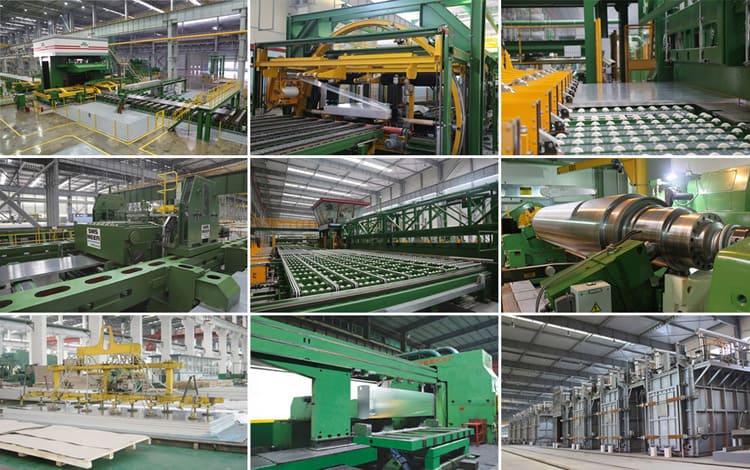
Casting and rolling process
Casting and rolling process: liquid metal, front box (liquid level control), casting and rolling machine (lubrication system, cooling water), shearing machine, coiling machine.
Cold rolling production process

Introduction to finishing production process
Aluminum alloy has the characteristics of low density, good mechanical properties, good processing performance, non-toxic, easy to recycle, excellent electrical conductivity, heat transfer and corrosion resistance, so it has a wide range of applications.
Aerospace: used to make aircraft skins, fuselage frames, girders, rotors, propellers, fuel tanks, wall panels and landing gear struts, as well as rocket forging rings, spacecraft wall panels, etc.
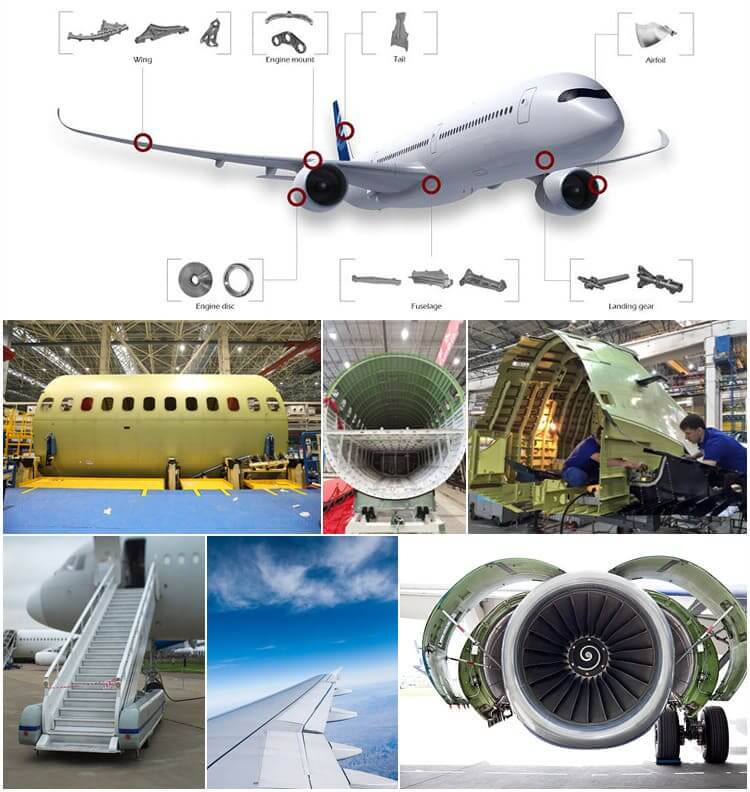
Aluminum alloy used for aerospace
Transportation: used for car body structure materials of automobiles, subway vehicles, railway passenger cars, high-speed passenger cars, doors and windows, shelves, automotive engine parts, air conditioners, radiators, body panels, wheels and ship materials.

Traffic application
Packaging: All-aluminum pop cans are mainly used as metal packaging materials in the form of thin plates and foils, and are made into cans, lids, bottles, barrels, and packaging foils. Widely used in the packaging of beverages, food, cosmetics, medicines, cigarettes, industrial products, medicines, etc.
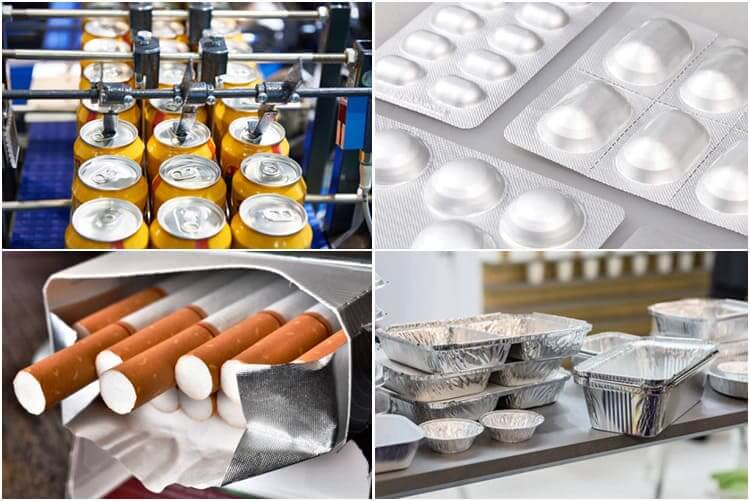
Packaging application
Printing: Mainly used to make PS plates, aluminum-based PS plates are a new type of material in the printing industry, used for automatic plate making and printing.

PS printing
Architectural decoration: aluminum alloy is widely used in building structures, doors and windows, suspended ceilings, decorative surfaces, etc. due to its good corrosion resistance, sufficient strength, excellent process performance and welding performance.
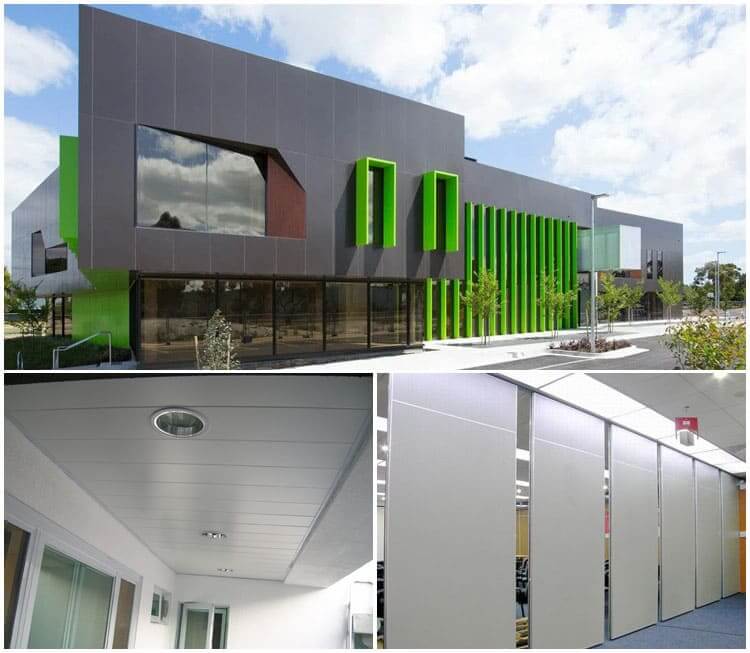
Aluminum alloy construction application
Electronic products: computers, mobile phones, refrigerator shells, radiators, etc.

Electronic product application
Kitchen supplies: aluminum pots, aluminum basins, rice cooker liners, household aluminum foil, etc.

Kitchen application
Packaging Of Aluminum Sheet/Coil
Every detail of packaging is where we pursue perfect service. Our packaging process as a whole is as follows:
Lamination: clear film, blue film, micro-mucosal, high-mucosal, laser cutting film (2 brands, Novacell and Polyphem);
Protection: paper corner protectors, anti-pressure pads;
drying: desiccant;
Tray: fumigated harmless wooden tray, reusable iron tray;
Packing: Tic-tac-toe steel belt, or PVC packing belt;
Material Quality: Completely free from defects such as white rust, oil spots, rolling marks, edge damage, bends, dents, holes, break lines, scratches, etc., no coil set.
Port: Qingdao or other ports in China.
Lead time: 15-45 days.

Aluminum sheet/plate packaging process
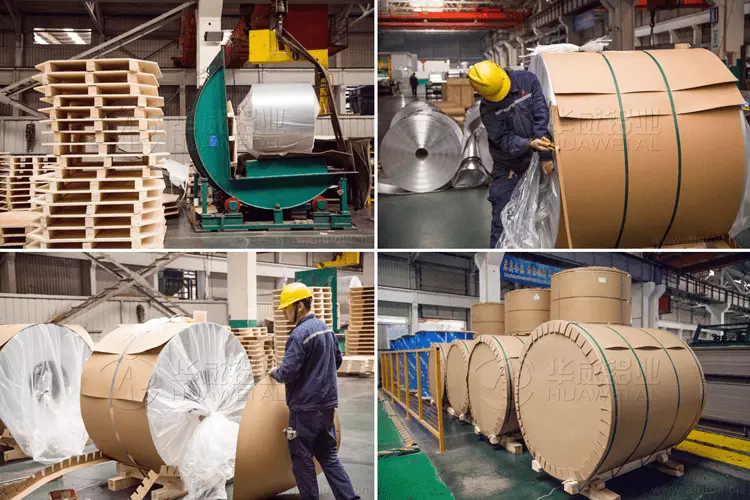
Aluminum coil packaging process
F: Are you a manufacturer or a trader?
Q: We are a manufacturer, our factory is at No.3 Weier Road, Industrial Zone, Gongyi, Henan, China.
F: What is the MOQ for ordering the product?
Q: Our MOQ is 5 tons, and some special products will have a minimum order quantity of 1 or 2 tons.
F: How long is your lead time?
Q: Generally our lead time is about 30 days.
F: Do your products have quality assurance?
Q: Yes, if there is a quality problem with our products, we will compensate the customer until they are satisfied.
Related Products
Latest Blogs
Introduction and uses of 1060 mirror aluminum sheet
1060 mirror aluminum sheet is an aluminum plate made of 1060 series aluminum alloy with a purity of more than 99.6% as the base material. It is made through special processing technology.
Aluminum foil vs tin foil
Aluminum foil and tin foil are two common metal sheet materials. They are similar in appearance, both have a silver-white metallic luster, and are often used in daily life to wrap food, perform baking or grilling and other cooking operations.
7075 t651 aluminum material properties
7075 aluminum alloy is a high-strength aluminum alloy. It belongs to the Al-Zn-Mg-Cu alloy series and is a representative product of the 7000 series aluminum alloy.
Physical and Chemical Properties of Aluminum and aluminum alloys
Although aluminum and aluminum alloys both use aluminum as the main synthetic element, they have great differences in certain physical and chemical properties.



